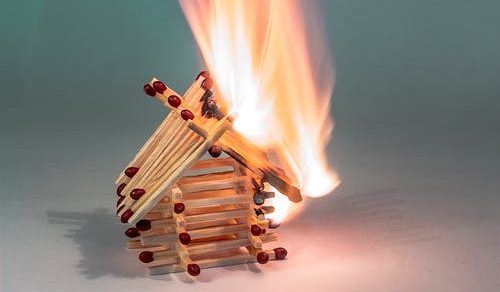How to Prepare Your Home for Effective Fire Damage Mitigation and Recovery
Let’s face it, fire is one of the most devastating disasters that can impact your home. It doesn’t just destroy possessions; it can cause significant structural damage and emotional trauma. Understanding the risks involved is the first step in fire damage mitigation. Many factors can increase the likelihood of a fire, such as faulty electrical wiring, unattended stoves, or even natural causes like lightning. Awareness and preventive measures are crucial in minimizing these risks.
1. Fire Safety Equipment: Your First Line of Defense
Have you ever thought about how the right equipment can make all the difference during a fire? Investing in fire safety equipment is one of the most effective ways to protect your home. This includes:
-
Smoke Detectors: Install them in every room and check the batteries monthly.
-
Fire Extinguishers: Have them readily available, especially in the kitchen, garage, and other high-risk areas.
-
Fire Blankets: These are particularly useful for small fires and can be easily stored in accessible spots.
2. Creating a Fire Escape Plan
You might think a fire won’t happen to you, but being prepared is always smarter. A well-thought-out fire escape plan can save lives. Here’s how to create one:
-
Plan Two Escape Routes: Identify two ways out of every room, typically a door and a window.
-
Set a Meeting Point: Designate a safe spot outside the house where everyone should gather post-evacuation.
-
Conduct Drills: Regular practice is key. Conduct fire drills at least twice a year.
3. The Power of Home Maintenance in Fire Prevention
Did you know that regular home maintenance can significantly reduce fire risks? Here’s what to focus on:
-
Check Electrical Systems: Ensure your home’s wiring is up-to-date and not overloaded.
-
Inspect Heating Sources: Keep heating equipment clean and maintained to prevent malfunction.
-
Clean Chimneys: Built-up soot or creosote can lead to chimney fires, so regular cleaning is essential.
4. Fire Insurance: A Financial Safety Net
While insurance isn’t a physical asset, it offers strong financial protection. A comprehensive home insurance policy with fire coverage can help you recover and rebuild without significant financial strain. Make sure you understand what your policy covers and consider additional coverage if needed.
5. Recovery Process After a Fire
So, a fire has occurred—what next? The steps you take immediately after can make the recovery process smoother. Here’s a rough roadmap:
-
Contact Professionals: Reach out to experts to assess the damage and begin the cleanup process.
-
Document Everything: Take photos and keep records of all damages for insurance claims.
-
Secure Your Property: Board up broken windows and doors to prevent further damage or theft.
Dealing with Structural Damage
Structural damage may seem overwhelming but don’t give up hope. Work with contractors who specialize in restoring fire-damaged homes. They’ll assess the weakened structures and make necessary repairs, ensuring your home is safe and sound.
Managing Emotional Impact
Let’s not ignore the fact that fires can be emotionally draining. It’s crucial to take care of your mental well-being and that of your family. Consider talking to a therapist or joining support groups to navigate through these challenging times.
6. Long-term Strategies for Fire Damage Mitigation
Preparing for emergencies isn’t just a one-time task. Implement long-term strategies to keep your fire mitigation efforts current and effective. Here are some strategies:
-
Regular Safety Audits: Conduct annual safety audits to ensure everything is in working order.
-
Community Engagement: Stay involved with local fire safety initiatives or community watch programs.
-
Updating Property Features: Consider fire-resistant building materials for renovations and updates.
The Woodlands fire damage restoration companies can be an invaluable resource. They provide professional advice and services tailored to the unique needs of each household, ensuring effective prevention, mitigation, and recovery from fire damage.
7. Technology that Enhances Fire Safety
The advancement of technology has brought new tools to enhance fire safety in your home. Consider integrating smart home technology that can detect fire risks before they become a problem. For example, smart smoke detectors send alerts directly to your phone, while automated fire suppression systems can mitigate small fires remotely.
If you are interested in technology like this, you might want to visit https://www.puroclean.com/conroe-tx-woodlands-puroclean-mitigation-services/ for more information on integrated solutions and professional services to enhance fire safety.
8. Natural Landscaping for Fire Prevention
Did you know that your garden can be part of your fire prevention strategy? Fire-resistant landscaping can slow fires from reaching your home. Opt for fire-resistant plants and keep your garden well-maintained to eliminate excess dry brush.
Final Thoughts
Preparing your home for fire damage mitigation and recovery is not just about having an evacuation plan or keeping a fire extinguisher handy. It’s about creating a comprehensive approach that includes prevention, immediate actions, and long-term strategies. By understanding the risks, equipping yourself with the right tools, and utilizing the available resources, you can safeguard your home and your family effectively. Remember, it’s always better to prepare for a situation you hope never comes rather than be unprepared if it does.



